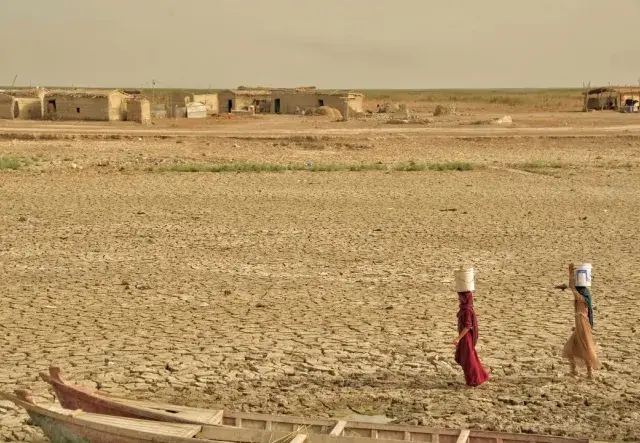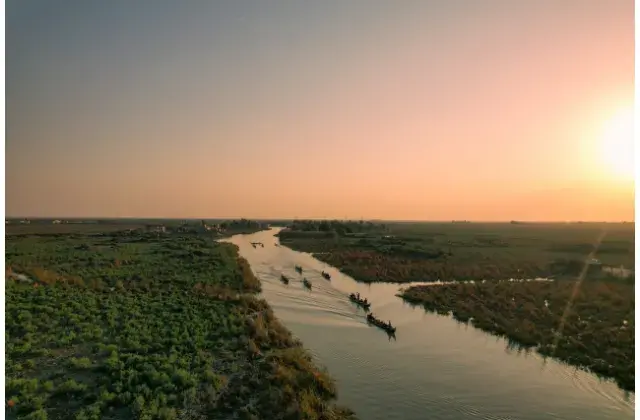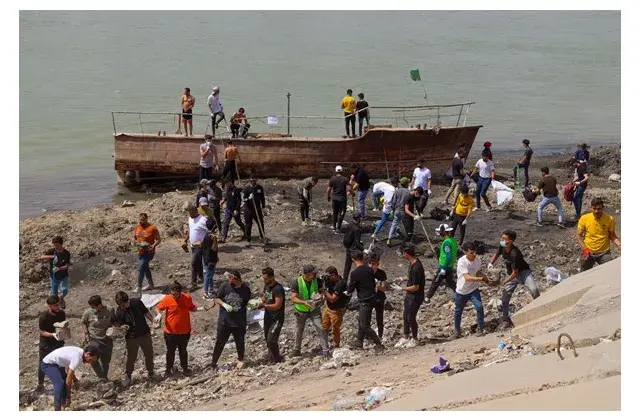Climate Change and Its Impact on Poverty in Iraq

Abstract: The Millennium Sustainable Development Goals introduce seventeen developmental objectives, with the first aimed at the eradication of poverty and the thirteenth focusing on addressing climate change. A notable characteristic of these United Nations goals is their interdependent impact, where each goal influences and is influenced by the others. Today, global climate changes have a direct impact on poverty levels. In Iraq, significant climatic challenges have emerged post-2003, which have directly affected the country’s poverty levels. These climatic shifts necessitate the implementation of public policies to address climate change issues, as environmental degradation can adversely affect production and employment, particularly impacting the most impoverished and vulnerable population segments. This could also lead to a decrease in international oil prices, impacting the country’s public finances. This situation raises a crucial question: What is the extent of climate change’s impact on poverty in Iraq?
First: Indicators of Poverty in Iraq
Poverty is defined as “a decline in living standards below a certain level within economic and social standards.” The World Bank identifies poor countries as those where per capita income is less than $600 annually, encompassing 45 countries, mostly in Africa, with an average per capita income of less than $300 annually in 15 of these countries.
The United Nations Development Program (UNDP) defines poverty as more than just a lack of income, resources, or the assurance of a sustainable livelihood. It encompasses multiple dimensions including hunger, malnutrition, limited access to education and essential services, social discrimination, exclusion from the community, and a lack of opportunities to participate in decision-making.1 According to UNDP reports on poverty indicators in Iraq, the 2014 report noted that the Multidimensional Poverty Index was at 0.05, with 13.3% of the population living under these conditions, equating to 4236 individuals per thousand, where the intensity of deprivation was 39.4%, and 7.4% of the population was at risk of multidimensional poverty, with 2.5% living in extreme poverty. The dimensions of deprivation from overall poverty were also 2.5%. In terms of education, the rate was 50.1%, in health 38.6%, and living standards 11.3%.
The 2015 UN Human Development Report indicated that the Multidimensional Poverty Index was 0.052.3 Meanwhile, the 2019 report showed that the poverty index for the period between 2007-2018 was 8.6%, with deprivation intensity at 37.9%. The rates remained stable in 2020 and 2021 reports, likely due to the lack of data and population surveys by the Iraqi government.
Second: Forms of Climate Change in Iraq
Iraq is undergoing numerous climate changes today for several reasons, with the water problem at the forefront. Iraq’s water resources are under increasing pressure for several reasons, the first of which is population growth and economic development, in addition to increased water withdrawals from countries located on the banks of the Tigris and Euphrates rivers, and due to the land resource strategy in Iraq. These impacts are estimated to lead to a one-degree Celsius increase in Earth’s temperature. It is also expected that the water supply gap will reach 10.9 billion cubic meters by 2030, and Iraqi water security faces challenges, due to its dependence on water flow from neighboring countries, as Iraq is a downstream country that produces more than 60% of its water outside its borders (Turkey-Iran-Syria). In addition to this, Iraqi waters face the problem of salinity and soil degradation associated with municipal, industrial, and agricultural activities. Therefore, ten Iraqi provinces out of 18 provinces have facilities for treating sewage water, which leads to serious environmental pollution, and that water scarcity and its shortage will lead to major risks on agricultural lands that will pose risks to food security in terms of increased soil salinity and the expansion of sand dunes towards the soil. According to a World Bank report, it is likely that the proportion of water in Iraq will decrease to 20% by 2050 due to climate changes. On another note, emissions are a cause of climate change in Iraq, where carbon emissions have doubled over the past decade driven by population growth and increased oil production. Iraq accounts for 0.45% of global greenhouse gas emissions, ranking fourth in the Middle East and North Africa region after Iran, Saudi Arabia, and Egypt as of 2019. Iraq also recorded the highest carbon intensity (emissions as a percentage of GDP), linked to high population density and associated increases in energy production and domestic transport. Oil and gas production themselves emit significant greenhouse gases due to the petroleum materials involved in extraction processes, flaring and venting of natural gas, and methane leaks along the oil and gas value chain. Ultimately, according to the World Bank, the energy sector accounts for about three-quarters of Iraq’s total carbon emissions, over 60%, with more than 98% of Iraq’s electricity generated from fossil fuels in 2019.6 The electricity sector also contributes to emissions threatening the environment and climate, as the increasing reliance on electricity production from general generators produces higher emissions compared to thermal power plants, according to International Finance Corporation reports. Iraq ranks fifth globally in the number of general generators. Facts about climate change in Iraq indicate that it is the fifth most susceptible country to climate deterioration worldwide, due to severe climatic phenomena such as high temperature rises, insufficient rainfall and drought, water scarcity, recurring sand and dust storms, and floods. In 2013, Iraq experienced over 300 sandstorms, while from 1950 to 1990, the number of sandstorms was less than 25 per year. Additionally, 94% of internally displaced persons (IDPs) in southern Iraq provinces reported water scarcity as a primary reason for their displacement.
Third: The Direct Relationship Between Climate Change in Iraq and the Worsening State of Poverty
The connection between the impacts of climate change and the increasing poverty indicators in Iraq is evident, as international data shows that Iraq, a middle-income country, records one of the highest poverty rates. As previously mentioned, poverty rates vary across regions and social groups, with rural areas experiencing double the poverty rates compared to urban areas. Regarding well-being between the north and south, southern regions suffer from insufficient potable water for drinking, agriculture, and industry, making them more vulnerable to the effects of climate change, including increased water scarcity and sharp temperature rises. These factors affect jobs and livelihoods, particularly in the private sector, such as agriculture-related jobs, directly impacting unskilled labor. It is expected that these jobs will decrease by 11.5% in the medium term, affecting the state of poverty in Iraq and increasing the number of impoverished individuals. Climate changes also cause health damages, such as dust storms, carbon emissions, and the burning of natural gas and oil refining processes in Iraq, leading to an increase in severe diseases such as cancer. This compels individuals to leave their jobs and some to migrate, causing a rise in poverty rates in Iraq and a decrease in well-being levels.
Fourth: Future Scenarios
There are future scenarios for the impact of climate changes on poverty conditions in Iraq, summarized as follows:
First scenario: Climate change is expected to continue and escalate poverty conditions, with ongoing water shortages and increasing emissions. Consequently, poverty indicators will increase with the continued lack of government response to the climate change crisis and ongoing deprivation for individuals.
Second scenario: It is possible that societal thinking towards the dangers of climate change and its impact on poverty conditions in Iraq may change, potentially leading to community awareness that positively reflects on government policies, prompting serious and strict measures to resolve this crisis.
Fifth: Recommendations
1. Implement public developmental policies to reduce carbon emissions in Iraq and promote renewable energy.
2. Control the public sector for electricity production and eliminate the culture of general generators due to their harmful impact on residents in residential areas.
3. Find serious solutions and diplomatic agreements with neighboring countries to restore water flow to Iraq and maintain water security.
4. Address soil salinity and develop modern methods for agriculture and irrigation, in addition to economically supporting rural residents and developing development plans in this regard.
Conclusion:
According to United Nations Sustainable Development reports, Iraq holds a moderate rank and has seen an increase in poverty rates over different years, amid the severe climate changes the country is experiencing. These changes directly impact the increase in poverty rates among the poorer social classes and particularly rural residents. Consequently, this impact returns negative results on the health and food security of individuals, putting human capital at risk.
This article was written by Wala’a Ali Farhan / Al-Bayan Center for Planning and Studies and is licensed under CC BY-NC 4.0.






